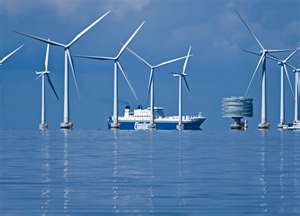
On the same day as the death of Neil Armstrong, the first astronaut to step onto the Moon, became public, the NZ High Court moonwalked its way to an off-the-world moment. It decided that greenhouse gas emissions and global warming are off-limits in the planning for an open cast coal mine. That’s as just as ‘out of this world’ as denying that the Moon landings ever happened, argues Simon Johnson.
On Saturday, two bits of news struck home to me very strongly. The first was the death of moon-landing astronaut Neil Armstrong. The second was the High Court decision that open-cast coal mines and global warming are legally and jurisdictionally unrelated in the Resource Management Act.
The moon landing in 1969 I remember very well. As a seven year old, I listened attentively to the ‘one small step’ broadcast. The whole class was silent under the spell of our teacher’s scratchy transistor radio. It’s one of my most strongly held memories of those days. I guess that reflects quite well on that class of seven year olds. They stopped playing bullrush, sniffing with colds, and fighting over lunches to listen attentively to the unfolding of one of humanity’s most historic moments.
While I was still fondly remembering the Moon landing, the next news item struck.

 Two wind energy items arrived in my inbox in close proximity recently. One was from the NZ Wind Energy Association (NZWEA) congratulating Meridian Energy on turning the first sod at Mill Creek wind farm in the Ohariu Valley north-west of Wellington. It’s a 60 megawatt farm of 26 turbines. The project will cost $169 million and is expected to be commissioned by mid-2014. It will increase NZ’s installed wind capacity from 623 megawatts to 683 megawatts.
Two wind energy items arrived in my inbox in close proximity recently. One was from the NZ Wind Energy Association (NZWEA) congratulating Meridian Energy on turning the first sod at Mill Creek wind farm in the Ohariu Valley north-west of Wellington. It’s a 60 megawatt farm of 26 turbines. The project will cost $169 million and is expected to be commissioned by mid-2014. It will increase NZ’s installed wind capacity from 623 megawatts to 683 megawatts.
 What makes this event significant, is the role Arctic sea ice plays as a reflector of solar energy. Ice is white and therefore reflects a large part of incoming sunlight back out to space. But where there is no ice, dark ocean water absorbs most of the sunlight and thus heats up. The less ice there is, the more the water heats up, melting more ice. This
What makes this event significant, is the role Arctic sea ice plays as a reflector of solar energy. Ice is white and therefore reflects a large part of incoming sunlight back out to space. But where there is no ice, dark ocean water absorbs most of the sunlight and thus heats up. The less ice there is, the more the water heats up, melting more ice. This 
 Geoff Simmons and Gareth Morgan, with help from John McCrystal, have produced a book which one hopes will be read by many New Zealanders.
Geoff Simmons and Gareth Morgan, with help from John McCrystal, have produced a book which one hopes will be read by many New Zealanders.